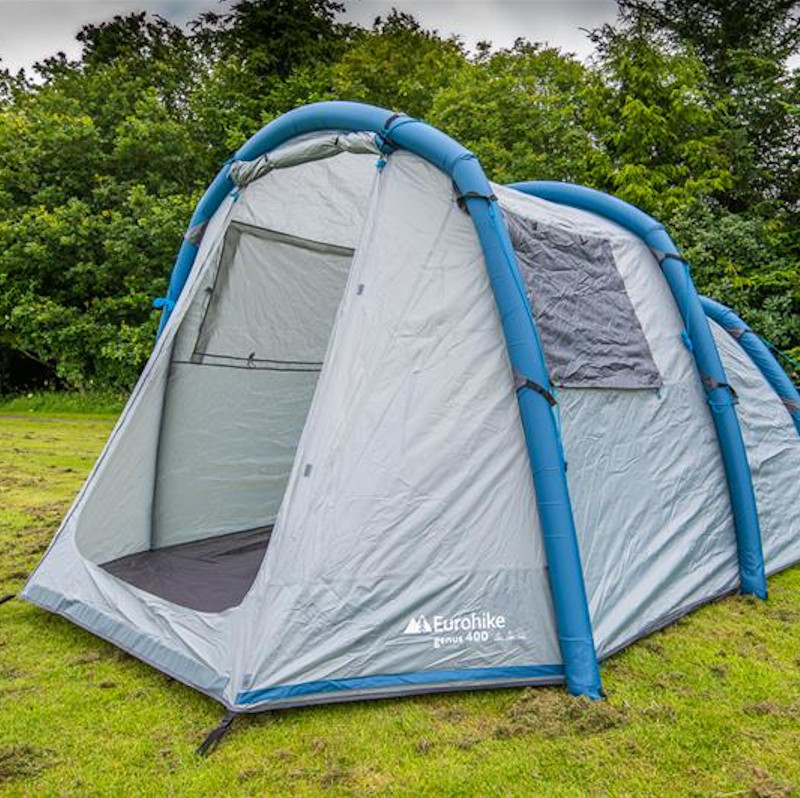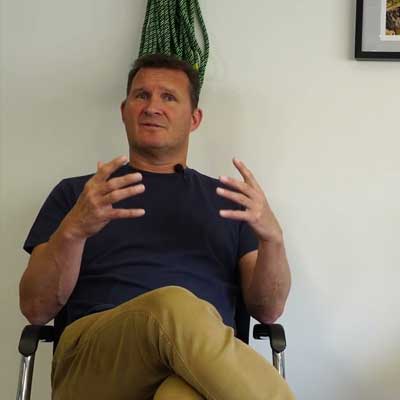

Tent Buying Guide 2024
Everything You Should Know Before Buying Your Next Tent
Whether you’re planning a last minute family camping trip on a campsite or a remote wild camping spot, your tent is your portable home-from-home. It’s your barrier from the elements, wind, rain, snow, hail and midges! Doing some research before you buy can be really beneficial. A well-chosen tent will allow you and your family to live and sleep comfortably in almost any environment. Our helpful guide will give you the advice you'll need to head out for a camping holiday here in the UK!
With so many excellent places to camp in the summer, Scotland can really be the gateway to your camping adventures! With such a wide variety of locations and camping styles on offer, it's no surprise that everyone has their own requirements when it comes to finding the perfect tent. Whether it needs to be quick to pitch, offer a large amount of space, or stand up to the wild weather, here at Tiso we have the tent to suit your needs. Camping is for everyone and with summer holidays approcahing, what's stopping you from giving it a try!
Quick Tips:
What are you using the tent for? If you are camping with your family, you might need a different tent to when you're off on your adventures on your own. If you're jumping from place to place, you'll want something lightweight to carry around in your backpack or something that packs down relatively small? If you love going wild and off-the beaten track, you'll need a tent that can withstand rough terrain. Thinking about the tent's use will determine the tent design and the combination(s) of weight, stability, ease of pitching and space you require.
What storage space might you need? If you have lots of adventure kit, you might well require extra room for all your gear, both internally and in the porch. These factors will determine the design and size of tent you’ll need, and don't just think about yourself, the others you're camping with will need space too.
Think Budget! If you plan to use your tent regularly, a trekking or mountain tent will stand up to long term use and weather conditions better than a basic tent. In the long run, you will save on repairs and eventually, on purchasing a replacement.


Which Tent Should I Buy?
If you're thinking of getting the family together for your next camping trip, read our list of the Best Family Campsites in Scotland. Ideal for sheltered campsites, family tents are usually bought when space is a key criterion. These tents may have 2 or more separate sleeping compartments with built in groundsheets for home-from-home comfort. The majority of the time on family camping trips, you will be camping out of the car, meaning weight and pack size are not the main consideration when choosing the tent.
Trekking tents for wild camping allow you to venture away from sheltered campsites and out into the wilderness. The dimensions of the tent decrease in favour of reduced weight and pack size. Designs are based on a tunnel or geodesic shape, allowing a balance of weight, rigidity and wind resistance. For more information, visit our helpful Wild Camping Guide.
If you want to camp in remote locations or you have all year round camping plans, looking to get a more resilient tent may be required. Mountain tents are designed for rougher weather and extended trips. The design will have a lower profile in the wind, often making use of geodesic designs for stability, rigidity and ease of pitching. What you need to ask yourself is, "Why am I buying a tent?" If you know you're looking for something specific, then you'll be in a much better positon to thin down the available options!
Dome
Dome style tents are a favourite for family and low-level trekking adventures as they provide more headroom and space versus their ground footprint. Dome tents are simple to pitch and are best placed in more sheltered camp spots. If you're looking for a basic starter tent then this is probably the best design to start looking at. With a wide range of options in this category there's options for beginners and camping experts alike. For a reliable 2 person dome tent at a competitive price point, check out the spacious Salewa Denali II.Shop Online
Tunnel
Tunnel tents offer a comparatively large amount of internal space. They require fewer poles and the overall result is a lighter tent that are faster and simpler to pitch. Some models of tunnel tent are designed for extreme weather, however they may be less rigid in high winds. For extreme weather, tunnel tents may need extra poles, additional guy lines and more care when selecting a campsite. If you think a tunnel tent is for you then check out the lightweight Salewa Litetrek Pro II. Shop Online
Semi-Geodesic
Semi-geodesic tents such utilise clever pole positioning to increase rigidity and stability. These designs can be free-standing, allowing easier pitching on soft, uneven or hard ground. The extra poles generally add to the overall weight of the tent, but this may only be marginal. In many cases the inner tent can be pitched on its own (without the flysheet) for use in warmer climates. A great example of a semi-geodesic tent here at Tiso is the MSR Elixir 2, a compact, freestanding two man tent that weighs just 2.77kg.Shop Online
Air Tents
Air Tents have been regarded as breakthrough in the world of camping. For a few years now, they have proven themselves to be sturdy, hard wearing and even boast a speedy pitch time. Unlike a poled tent, air tents use inflatable canvas inner tubes to support their structure. Most popular air tents have one single bedroom opening to a tunnel tent such as the Berghaus Air 400.Shop Online
Features To Look Out For:
With so many different options available when it comes to tents, it's important to look out for key features that you think you might require. Keeping a checklist of things your tent will need should help you to make decisions about what design, weight, style, and function. We've noted some of the key details to look out for when it comes to looking for your next tent...
Flysheet: The flysheet is the protective outer layer of the tent that keeps out the elements. A tent’s flysheet can be made from a wide range of different materials, with nylon (for performance) and polyester (for lower level use) being the most popular. For all weather protection, flysheets tend to be coated with a waterproof layer such as PU (polyurethane) or silicone elastomer to help shed water. Although a silicone elastomer treatment will increase the cost of a tent, it will also protect the flysheet better and increase the lifespan of the tent. Most tent flysheets have taped seams, giving full waterproof protection.
Inner Tent Structure: The inner section of a tent can be made from any number of materials, depending on budget, climate and intended use. Some are made using a large proportion of mesh for maximum breathability and minimum weight when travelling in hot conditions. Others are made from nylon or polyester for maximum durability and protection for use in colder or more extreme conditions. All inners are designed to allow air flow so that condensation build up is kept to a minimum.
Poles: Difference between poles can have a huge bearing on the cost, stability, weight and durability of a tent. Basic tents often use fibreglass poles that are cheaper to manufacture and are suitable for use in milder, low level conditions. Fibreglass poles can break under strain (such as strong winds and rugged terrain) but are generally easy and cheap to replace. All-performance tents use aluminium poles which are much stronger and generally lighter than fibreglass poles, but this also means they are more expensive to produce. There are also many different grades and thickness of aluminium pole, each specifically designed to provide the desired combination of lightness, strength and value for money depending on the design and intended use of the tent.
Groundsheets: The material used will have a large influence on the total weight and durability of the tent. With some trekking and mountain tents, use of a footprint to increase groundsheet cover can increase performance. Most low cost family tents have intergated groundsheets to make them easier to set up.


Tent Maintenence:
If you want to make the most of your camping adventures and prolong the lifespan of your tent, looking after it well and planning some maintenence is worth thinking about. When planning your next trip, you should also be thinking about factoring in some time beforehand to get your gear ready for the elements. Before setting off on a camping trip, it is important to know how to pitch your tent. There is nothing worse than trying to pitch an unfamiliar tent when it is cold, wet and windy! If you are taking your new tent, practice pitching it at low level before you set off. It is also a good idea to make sure you have all tent components (pegs, guy lines etc.) and they are in good working order.
When you have reached your destination, prepare the ground before taking the tent out. Remove any small rocks or sharp pieces of wood and make sure the ground is relatively flat and even. By making sure your tent is pitched securely you can avoid any problems with loose pegs and guy lines throughout the night. Always try and pitch your tent with the back to the wind or where it will catch the least wind. Make use of natural features to shield your tent from the weather and be prepared to re-pitch if the first choice isn't working out for you. Remember the weather can change very quickly and damage a poorly pitched tent.
After returning from a trip, hang or pitch your tent in a cool dry area, even if it has not been wet, to reduce the chance of mildew forming. Clean all pegs and ensure all poles are undamaged. When completely dry, fold and store in its bag ready for your next adventure. Reproofing your flysheet is a good way to prolong the waterproof life of your tent as well as protecting the material from the sun’s ultraviolet rays. UV rays will eventually break down the fabric on any tent but with proper care you will extend the life of your tent considerably.


If you're wanting to reproof your tent, pitch your tent outdoors, in a sheltered area, ensuring all panels are taut. Clean the flysheet with water using a hose or sponge to remove any grit or dirt. Once the tent is dry, apply a tent specific waterproofing product such as Granger’s Fabsil Gold UV or Nikwax Tent & Gear Solar Proof using a clean paintbrush. Leave the tent pitched until the flysheet is completely dry & repeat this once a year to ensure your flysheet lasts as long as possible.
If you've noticed some damage since your last time out, it might be worth looking at whether you should be repairing or replacing. For repairing small tears and holes, we'd recommend taking a look at the tent manufacturers website to see if they suggest any ways to repair your item. For major repairs, from replacing eyelets to fixing panels and zips, Tiso work with a number of authorised tent repair centres. We can also replace poles and pole sections for most tents. See our Customer Services & Repair Guide.
Get geared up for your staycation. Shop our range of family tents on sale!
SHOP FAMILY TENTS







